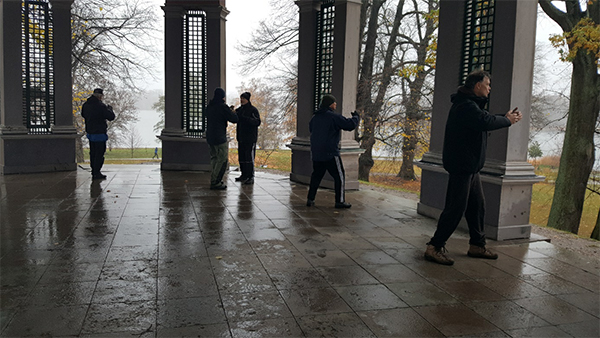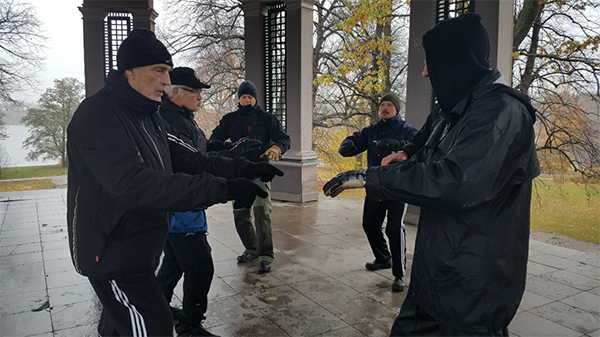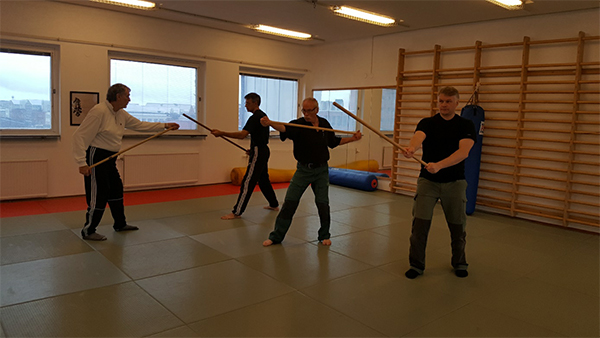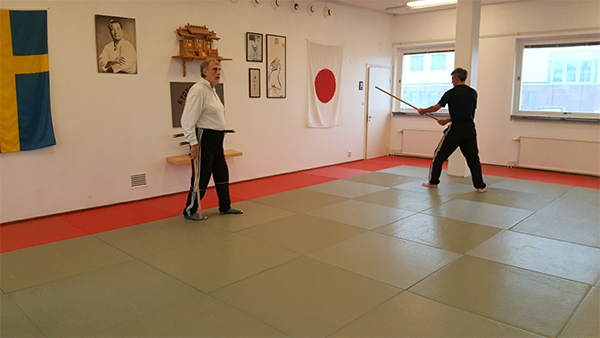
| Seminar and practice photos, Stockholm, 26-27 October 2019 | 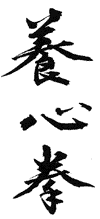 Yoshinken |
||||
Saturdays first Keiko was held in excellent educational weather. Sensei Marshall started with asking each person to tell him three individual things about personal Imi (meaning) within Yoshinken Keiko. There after Sensei Marshall started to work with Kamae - Ma-ai. First in explaining and then in bunkai with each person. In the end of the first Keiko we had moved through all five principles of Yoshinken. I-mi (meaning), Hari-i (dimension), Teki-yo (application), Ryu-do (flow) and Mu (no mind). Before ending, each of us where also asked to summarize the first Keiko with one word. The second Keiko on Saturday began with individual moving in Tanshu - showing development in all Taikikken ways. In the never ending journey toward master moving, Sensei Marshall told us to move like we were fighting one or several oppenent/oppenents, in the way it would be done in real Kumite. We then entered the part of seminar that included Kobudo. We ended the second Keiko of Saturday with the wooden training sword Bokken.
|
The Keiko on Sunday began with Han Zen. We built up our Kamae with the goal and intention to enter it with 100% confidence and harmony. Sensei Marshall also tested our Ritzu-Zen with a Kumite approach. Here we learned several very important lessons. Before we entered the Kobudo part of the Keiko with the Jo, the main weapon in Shindo Muso Ryu, Sensei Marshall, Sensei Åke, Sensei Esko and Sensei Andreas were given a very special task. At Shin-nen-keiko 2022, these four Sensei shall demonstrate two personal katas. Creating one Kobudo-kata and one kata, both representing the principles in Yoshinken. This is a unique way to adapting and interpreting a individual perspective in modern Budo. Sensei Marshall then told us how the Shindo Muso Ryu was founded in the year 1605 by Muso Gonnosuke Katsukichi. After being defeated by Miyamoto Musashi, Gonnosuke devised a new weapon - the Jo (Tsue). It was 30 cm longer then average Japanese sword. Gonnosuke went on to develop techniques for his stick based on his experience with a variety of older weapons. He incorporated the thrusting movements of the halberd (Naginata), and striking movements of the staff (Bo) and the sword (Tachi). With this new weapon and its techniques the art of Jojutsu was born. The legend says that Gonnosuke went back to confront Musashi again and emerged victory. The Sundays Keiko was ended with a beautiful Kobudo Randori between Sensei Marshall with the Jo and Sensei Åke with the Bokken.
Rickard Alvevind
|
||||
|
|||||
